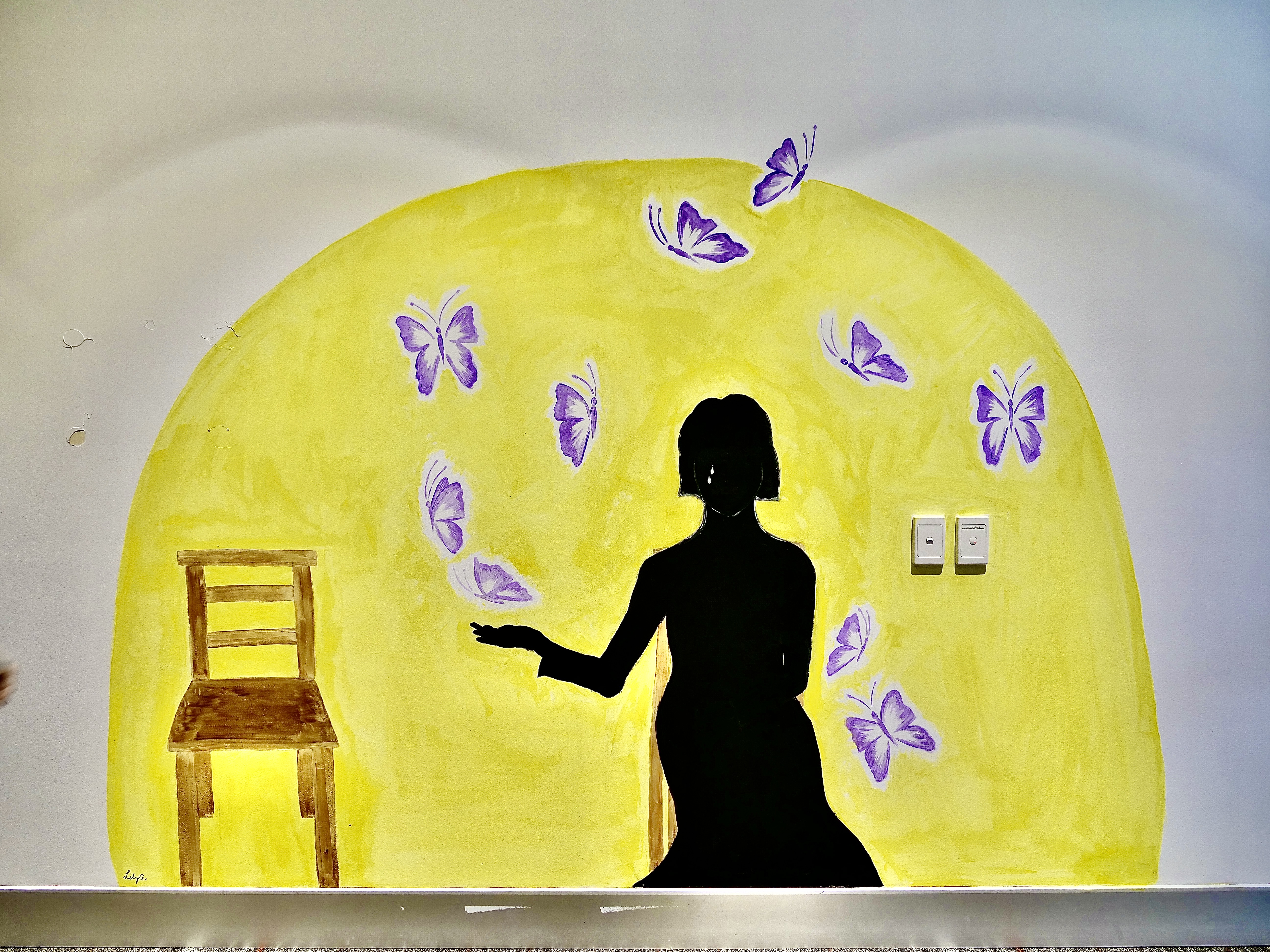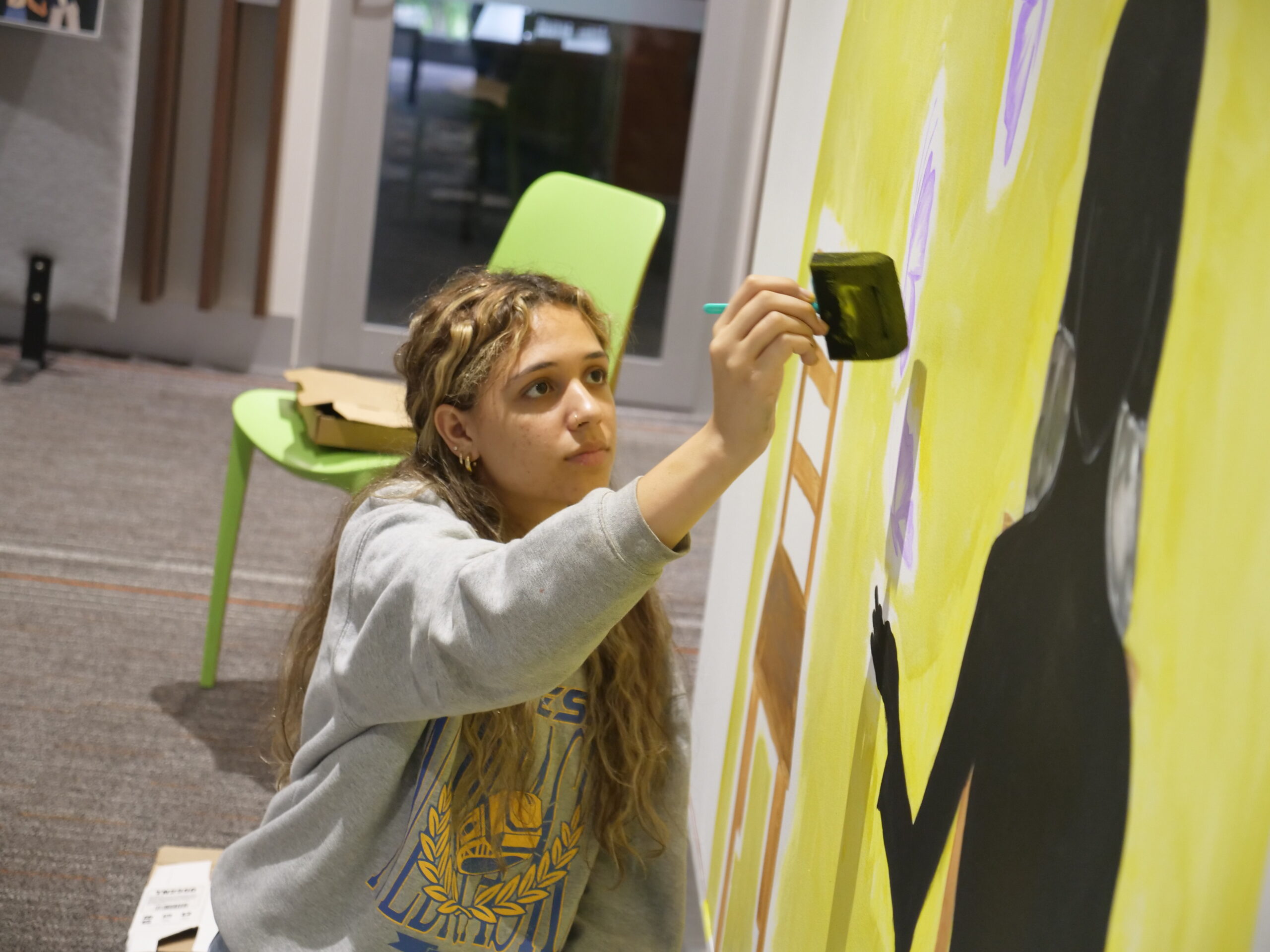
Just yesterday a wall mural was painted in front of the UQ Union’s women’s collective and international collective room. The artwork painted by Lily Ghali, a fine arts student, conveys deep bittersweet meaning. The Semper Floreat team was incredibly lucky and honoured to be able to attend the artist’s painting process and interview her to better understand the meaning of her work and the historical significance of the artwork. The mural is officially called “the Girl of peace” a painting that was influenced and inspired greatly by artist Kim Seo-Kyung’s ‘Girl statue of Peace’.
The History behind:
The girl statue of peace by Kim Seo-Kyung is also known as the ‘comfort women’ statue. The statue symbolises the victims of sexual slavery during the Pacific War. The “comfort women” are women and girls who were taken forcibly or completely defrauded into joining military brothels to be “used for the comfort of the soldiers”. The number of these women is estimated at around 200,000 people, who were taken from Imperial-Japanese-occupied territories: Korea, China, Philippines, Burma, Thailand, Vietnam, Malaya, Manchukuo, Taiwan, the Dutch East Indies, Portuguese Timor, New Guinea alongside a smaller number of European women from the Netherlands and Australia. Thus, the Girl statue of peace serves as a symbol of remembrance, honouring all women and children who were sacrificed for the evil of men, before and during the Pacific War. It also symbolises and encourages the fight and advocacy for justice for the victims who still to this day demand a formal, sincere, and legitimate apology from the Japanese government.
The Interview:
The Semper Floreat team was able to interview Miss Ghali for a series of questions regarding her artwork and her involvement with the mural project.
How did you first become involved with this?
“My friend Eric approached me for an art project, since I have previously done other cultural and activism art projects, I was eager to help out.”
When you first learnt of the history of the “comfort woman” how did that make you feel?
“I felt shocked that I didn’t know more about this history. I somewhat felt an emotion of ‘defeat’ that such a horrible thing has occurred in the past and I can’t do anything to change that past. I felt sadness and was disgusted at the history behind it. I was also very heartbroken that so many of these women were under the age of 16. These emotions were the key driving factors that made me want to get involved. I wanted to do something, at least anything that can bring some level of justice to what occurred. I know I cannot change the past, but in my present moment I can still raise awareness, so the voices of these women are not forgotten.”
What is the meaning of your art and who inspired you?
“Eric’s passion for this cause inspired me to do my own research. Upon my investigations, I was heavily influenced by artist Kim Seo-Kyung the original designer of the ‘Girl peace statue’. My artwork is a homage and tribute not only to the victims of the Pacific War but also to the amazing artists who first created such symbolic and powerful art. I have included numerous symbols from the original art that serves as a powerful tool to share the narrative of the girl in the art.”
Here are some changes I made to my painting.

Her hand is opened allowing butterflies to fly out of her hand, signifying a start of future reconciliation and hope flourishing. Her other hand is still clenched up as a fist representing the dedication of the victims who will no longer stay silent but will tell their story.
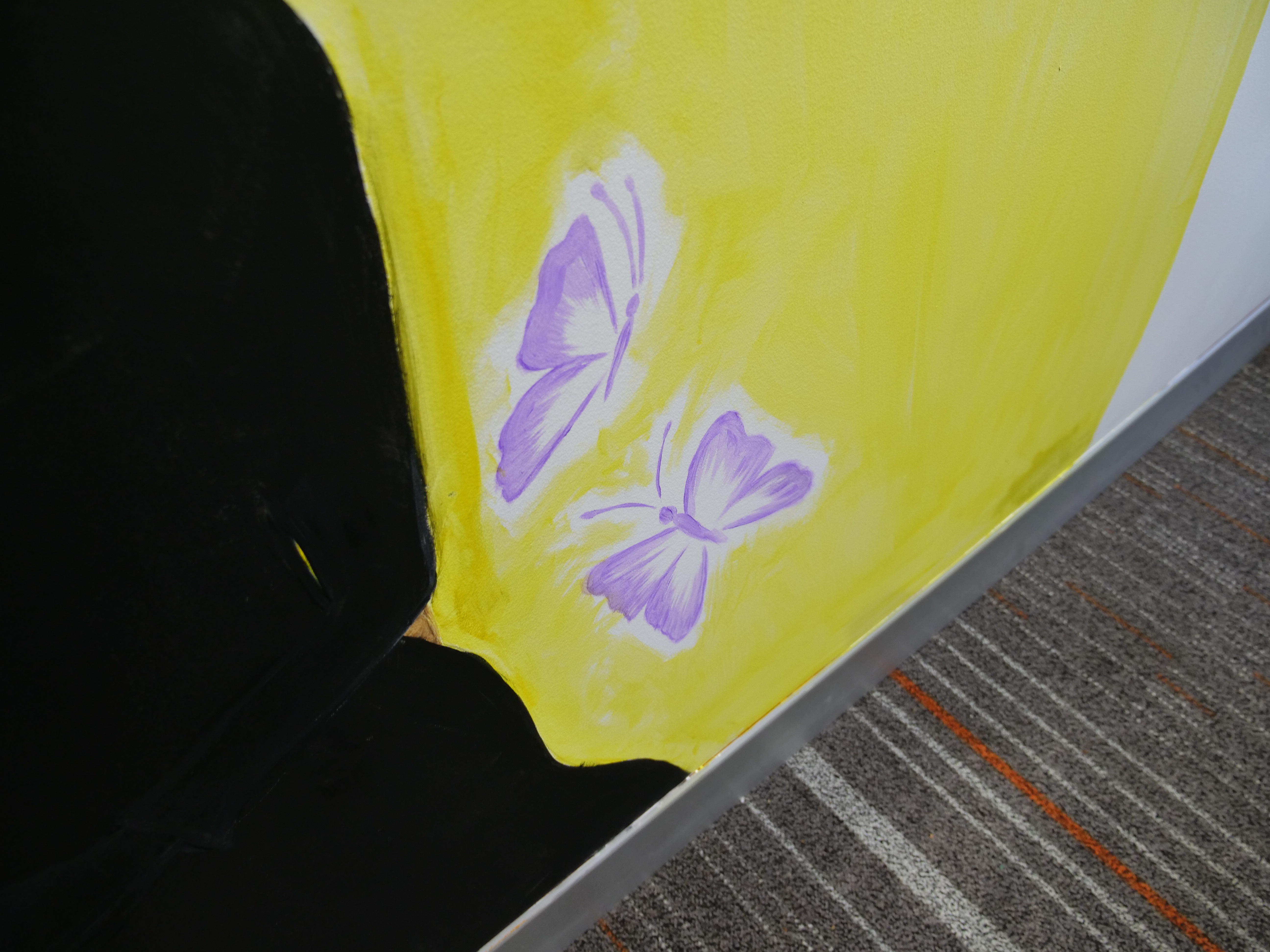
Unlike the original art with a shorter skirt and her bare feet showing (symbolising the unstable lives of the victims), I decided to paint a longer dress covering her feet that are stuck to the ground, I wanted to show that the girl is welcomed here at this place, and she indeed belongs here and can feel welcomed. I wanted the girl to have some stability here at UQ.
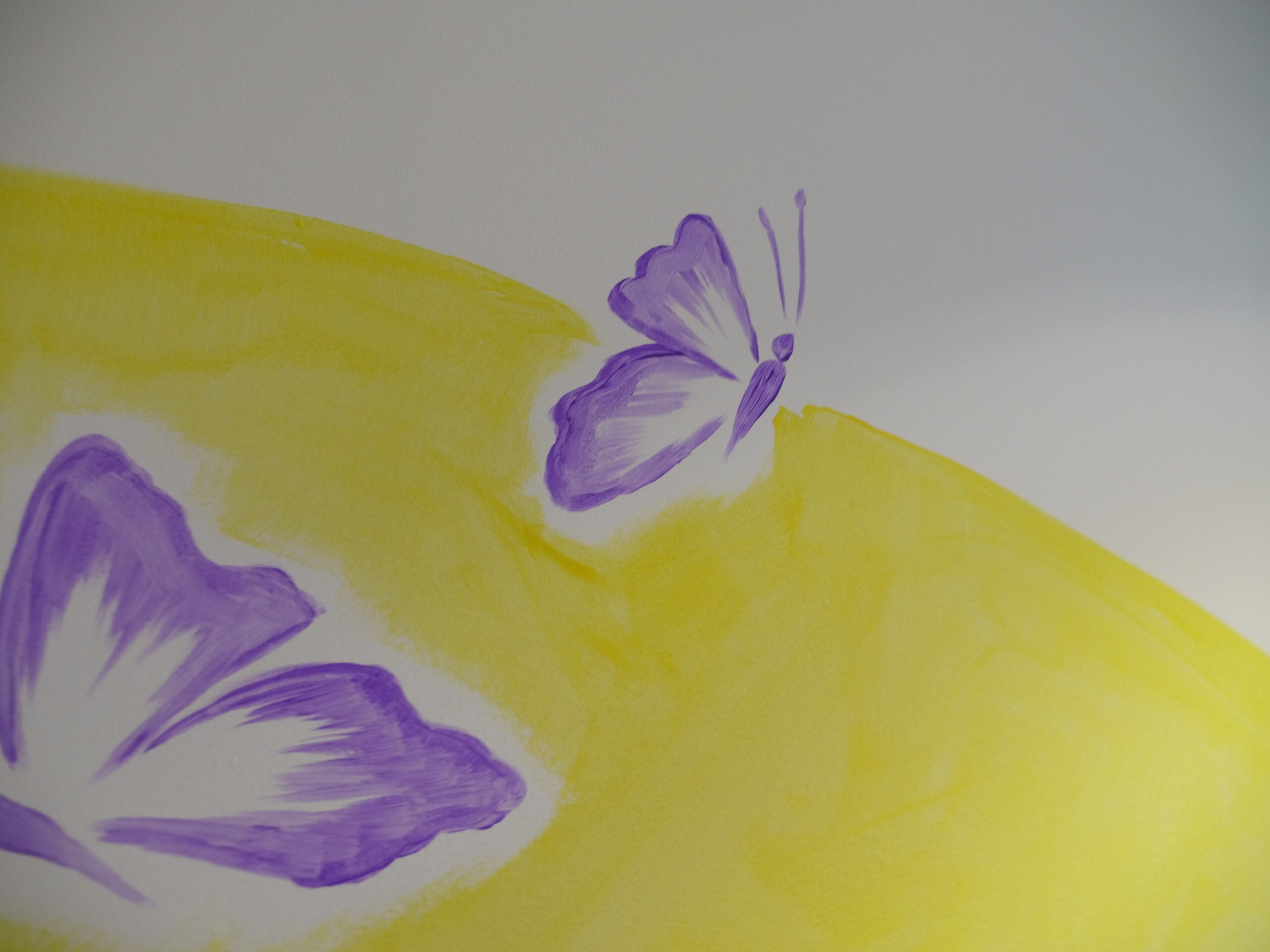
I painted a butterfly breaking out of the yellow background, I wanted to express how this message of hope and the truth regarding the ‘comfort women’ will be shared further and further raising more awareness in the future.
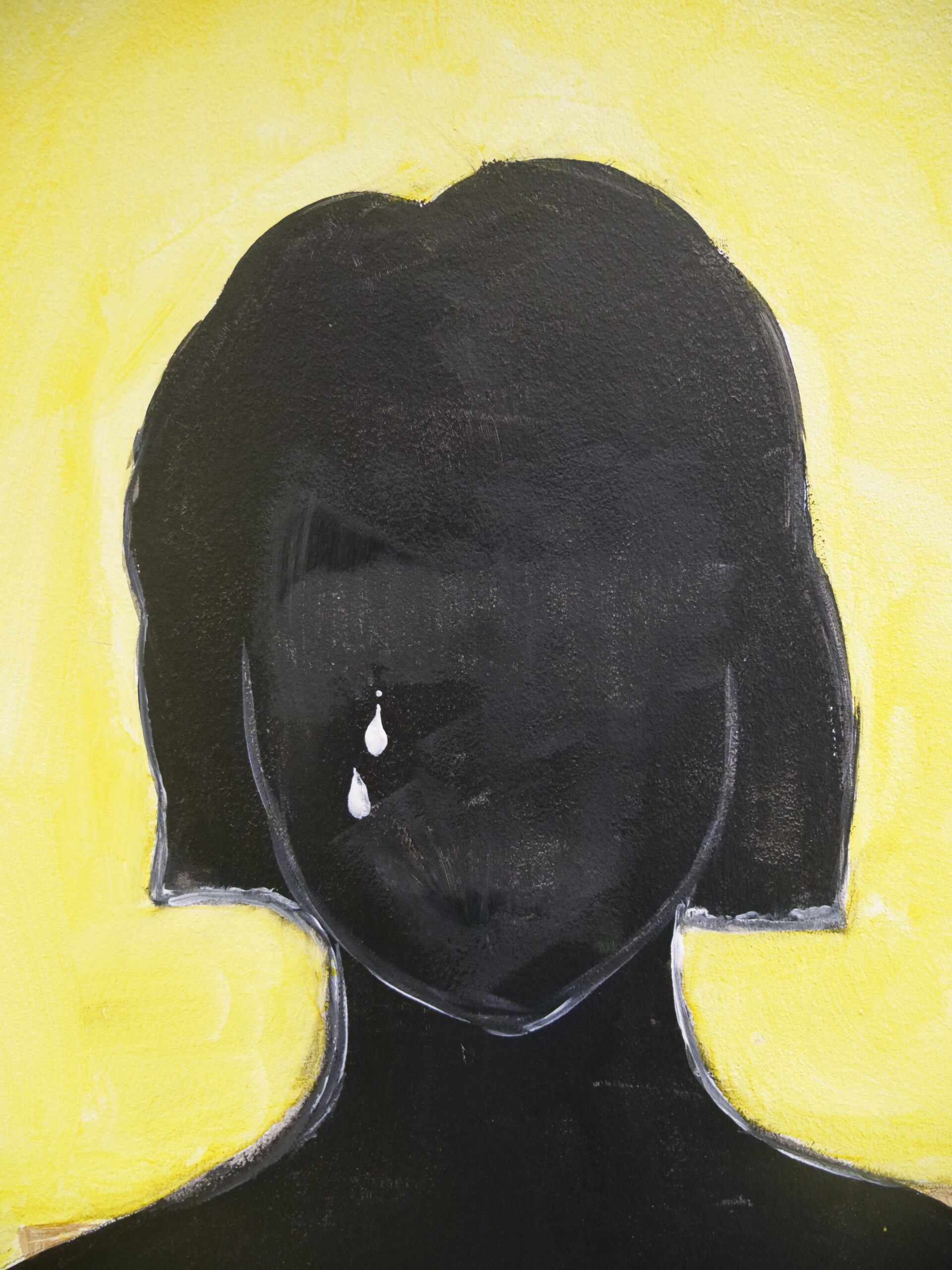
I didn’t paint the original East Asian girl from the statue, but rather a black silhouette with no facial features. I did this because the victims of ‘comfort women’ came from a diverse range of various nations, including even Australia. I wanted to find a way to represent all the women who were taken away, and my way of doing that was by painting the girl as a silhouette.
Even though I wanted to make this painting all about love, peace and hope that is to come in the future, we cannot have a proper future without remembering the past. That is why I have included the tears on her face, even though the girl is hopeful for a better future she still can remember the hurtful past and everything she had to go through.
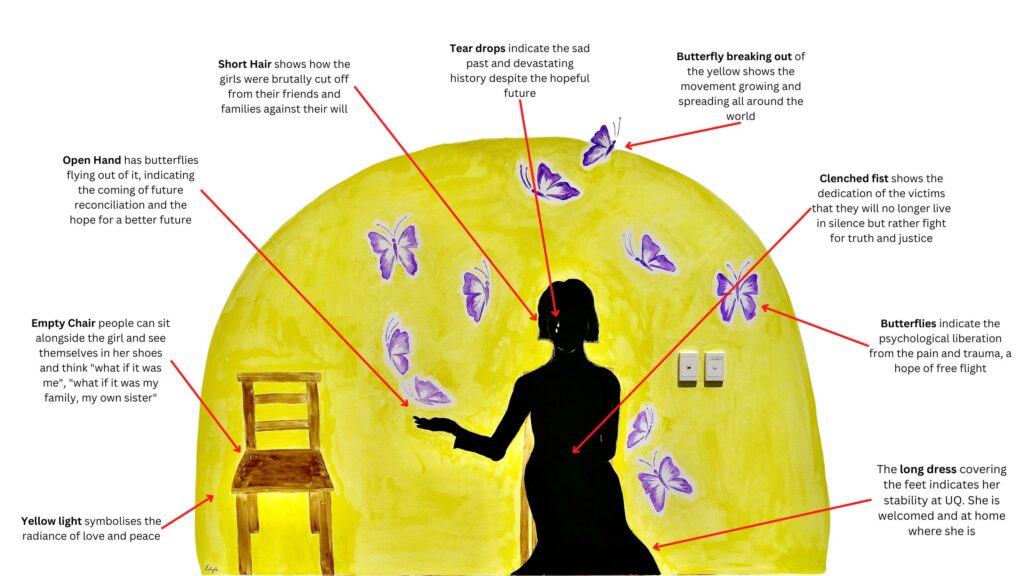
What effects do you hope your artwork to have in our world?
I hope this art can be used to raise more awareness of such an important history that we all collectively share as we live in the Pacific. I hope people are more educated, that this indeed occurred, and people were hurt, many people. I think it’s also very important to mention that countless nations were damaged by this past including our nation Australia. This is not just about the past; this is about all sexual violence occurring around the world against women and children. This is not an issue of the past, but rather an ongoing issue that we must all stand up against. I hope my artwork can spark positive discussions on how we can better influence and change the world today.
Any other comments you’d like to make on this topic or your art?
I want to say that I was utterly shocked to find out that even Australian women were involved in the Pacific War sexual slavery by the Imperial Japanese military. Australia has such a huge role and history in the pacific, yet I couldn’t believe that I was never taught about this issue. I was so amazed and encouraged by Jan Ruffe O’Herne the Australian Women’s rights activist who shared her story and fought for justice until her passing. I think she would’ve loved to see that more young people are finding out about this history and are getting involved to do something about it.
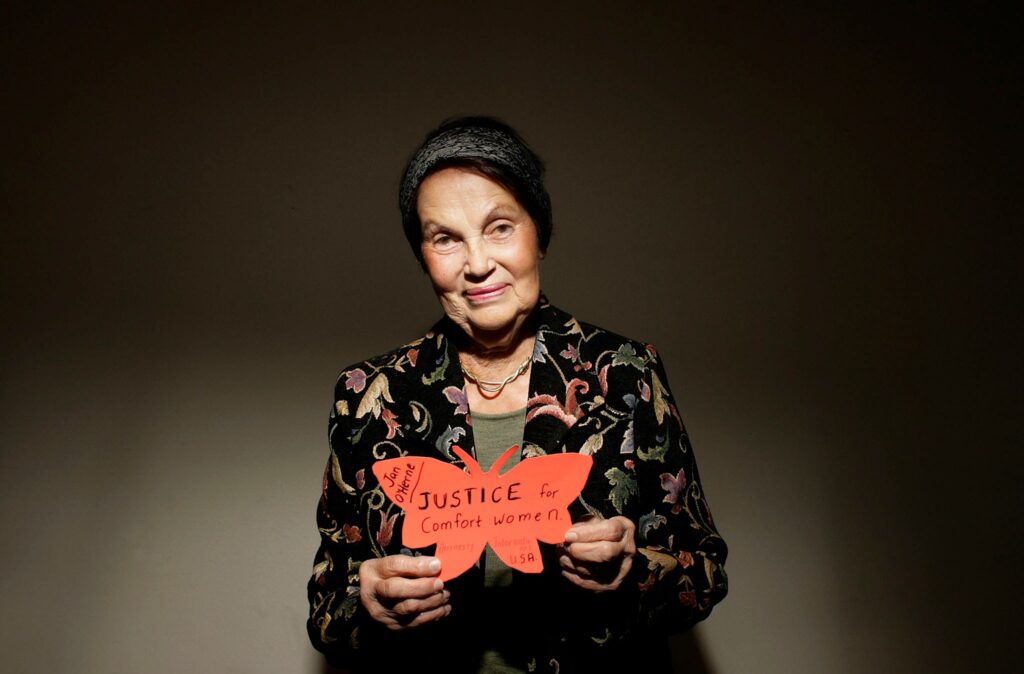
Author’s Comments:
For many people, this is just history, something terrible that happened during terrible times in modern history, something that happened 80-90 years ago and is not so relevant anymore. However, for the victims and their families, it has been a living hell every day for the last 80 years. For some people, this isn’t a shameful history that “happened a long time ago”, rather for them, it is their story, and it is their life.
This is the reason why countless people and organisations all around the world work to advocate for the victims of “comfort women”. This is the reason why people are fighting every day across the world to erect statues, create artwork, make films, and write books.
This is a past that cannot be forgotten nor should it ever be forgotten, that is why we do what we do, to continue to raise awareness, to educate more people that sexual violence against women has always occurred in human history and still continues to occur all around the world today.
If we truly want to create a better future for our world, we mustn’t forget our past. We must rather learn from our past, remember it and bring justice for the victims in order for us to move on to creating a better, fairer and brighter future.
I hope one day, even UQ will be able to erect such wonderful statue, to remember and advocate for all victims of wartime sexual violence.
If this article has spoken some encouragement to you, please consider getting involved with us and our activism. You can reach out to me at 0410213936 or email our office at info@fcwsydney.org.au
Views: 887

